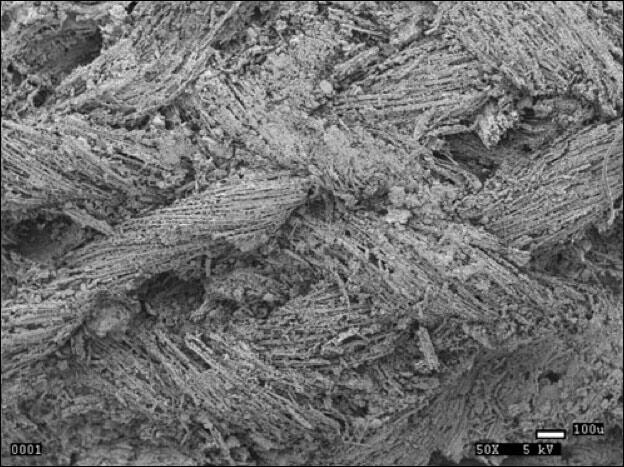Above: Scanning electron micrograph of jute textile feature on a ceramic from Harappa at low magnification
"The study of archaeological textiles produced from plant crops in South Asia has advanced significantly in the past decade as a result of archaeo-botanical studies of seed remains and analyses of fibers," according to the authors.
Abstract
A report on the results of an analysis of a preserved structure of jute on a ceramic artifact from the site of Harappa that is dated to 2200–1900 BCE. Jute cloth has not previously been identified at this early date in the Indus civilization. Since fiber remains are rare in pre- historic South Asia, we briefly review the evidence for seed and fiber remains used in textile production in this region. The new evidence for jute described in this paper is from one of a group of ceramic shards from the same vessel (Catalog No. H88/368 feature 27) discovered in a street context at Harappa on its Mound E, initially occupied in 3300 BC until as late as 1300 BCE.

